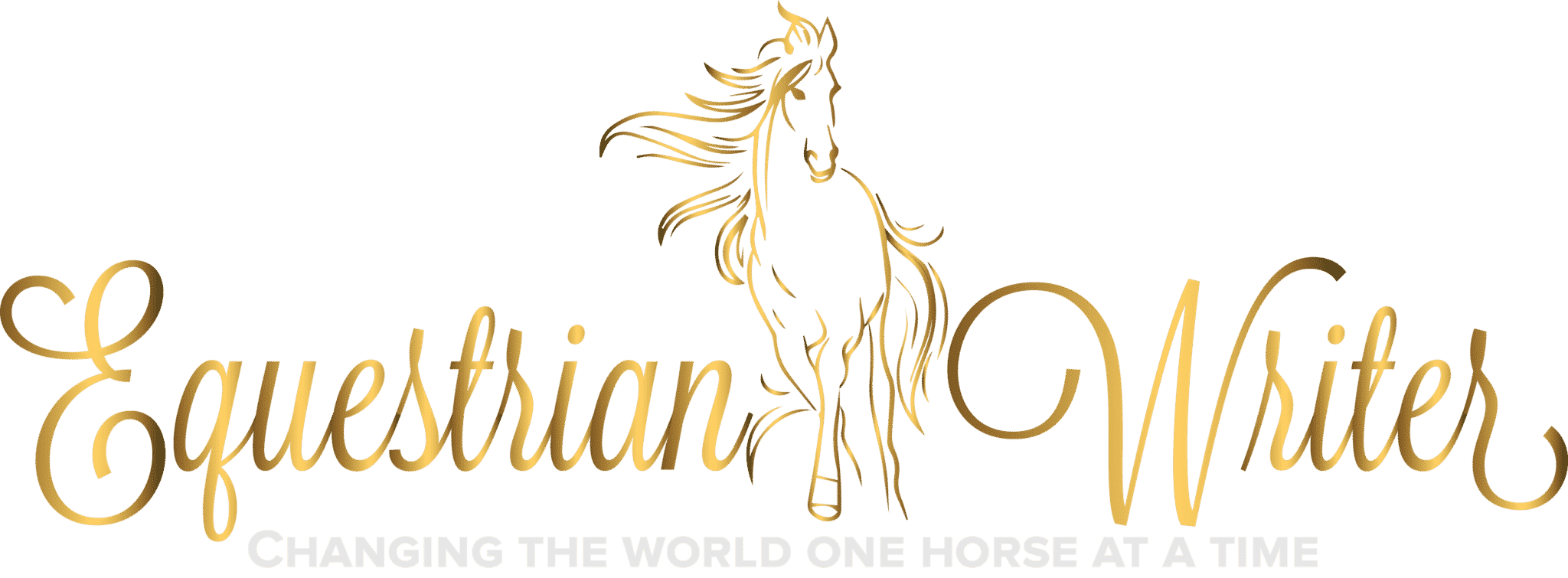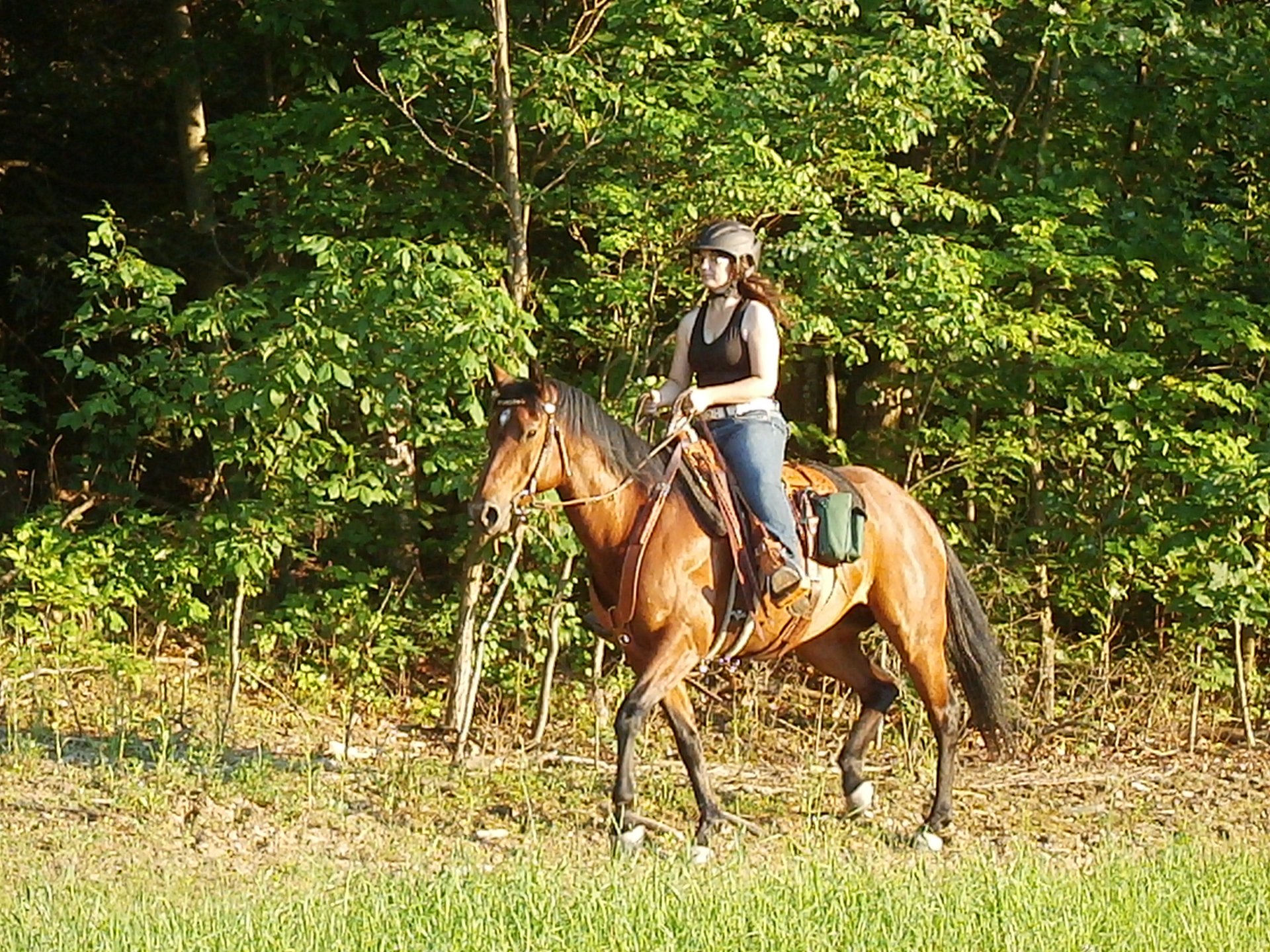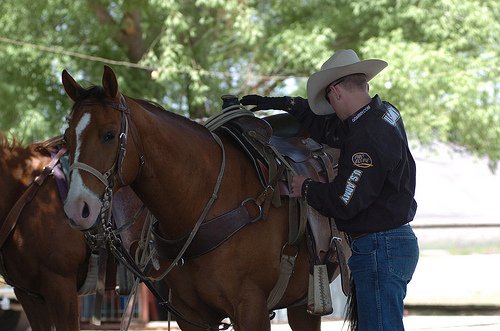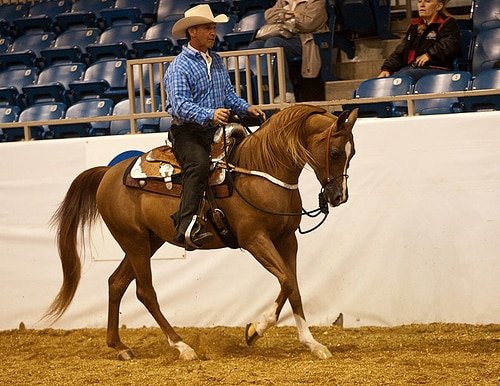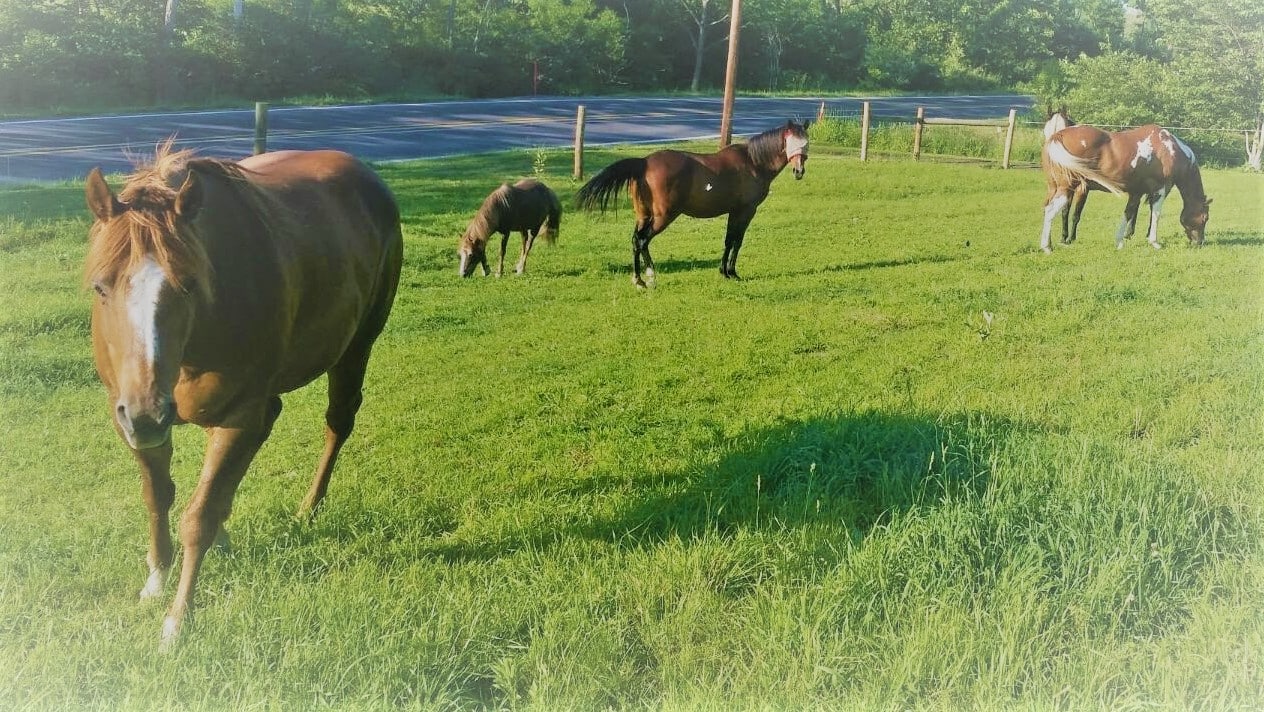

In horse training, there is a distinct difference between correcting a mistake and preempting a mistake. Too often, as equestrians, we find ourselves instinctually preempting mistakes before the horse has fully committed to them. At first, it seems logical that preventing a horse from making mistakes will prevent him from developing bad habits. However, this thinking is actually entirely backward. In order to learn, the horse must be allowed to make mistakes. Having those mistakes corrected will teach the horse not to make that mistake again and prevent bad habits from forming.
For example, if you know that your horse anticipates turning at a particular spot in the arena or on the trail and you block him from doing so when you come to that spot, that is preemption, not correction. The horse hadn’t turned when he wasn’t supposed to, but the horse hasn’t learned not to turn when he’s not supposed to. For the horse to learn not to turn when he’s not supposed to, he has to actually follow through with turning when he’s not supposed to. Then, you correct him, and he learns from that correction. However, if you are continually blocking him from turning, he will dive into that turn the moment you take that crutch away. Rather than forming the good habit of not anticipating the turn, he has developed a bad habit of diving into a turn as soon as you take his crutch away. Preempting mistakes makes things worse, not better. The horse becomes dependent on you to micromanage every move he makes, and the moment you stop micromanaging, he appears to fall apart.
How to Apply Proper Corrections: Make the Right Thing Easy and the Wrong Thing Difficult
You cannot force a half-ton animal to do anything. Instead, you have to find a way to encourage the behavior that you want. We can encourage any behavior we want by making the right thing easy and the wrong thing difficult.
Now, keep in mind that this principle is often misunderstood. Making the wrong thing difficult does not mean we are punishing the horse for doing the wrong thing. It merely means we are presenting the horse with two choices. One choice is less work than the other. The easiest choice will be the correct choice that we want the horse to select. However, it remains the horse’s decision. If the horse wants to choose the hard way, he is free to do so until he changes his mind. Horses are inherently lazy creatures. They won’t keep choosing the more challenging option forever. Let’s look at an example to understand better how this works.
Training Example: Correcting a Horse that Anticipates Turns
Prerequisites
Your horse must have a good backup and turn on the haunches already established. Now is not the time to be training either maneuver as you use them to correct another behavior.
Training Exercise
Setup
This can be done in either a trail or an arena. Ride like you usually would, doing whatever exercises you would typically do, whether it’s arena work or just riding down the trail. Don’t anticipate the horse turning, but be ready for it.
Step 1
When your horse starts to turn on his own, let him commit to the turn for at least two strides.
Step 2
Bring the horse to a halt and back him up to the exact point where he started his turn.
Step 3
Execute a turn on the haunches, so you face in the direction you were initially traveling in. Resume riding in the direction you were initially traveling in. Pick up whichever gait you were initially riding in and act as though nothing happened. Rinse and repeat until your horse decides that maybe it would be easier to stop anticipating turns and wait for you to cue turns.
Keys to Success
1. Patience
It might take some time for your horse to give in. It takes repetition. Horses like to make you think they can hold out forever. However, they have far less patience for these types of situations than they want you to believe.
2. Persistence
Don’t get mad at the horse and turn it into a punishment. Backing up is not a punishment; it’s a correction. The horse needs to believe that you are perfectly happy to keep doing this all day for as many days as it takes for them to give in. Rather than thinking: “You are a bad horse! I’m going to make you back up so you regret disobeying!” you need to think “Great! Now we get to practice our back up and turn on the haunches. I love doing this!” Your thought process will care through to your body language. Your horse will sense a large difference between those two mindsets.
3. Let the Horse Commit to the Mistake
There will come the point where you may feel them starting to turn, but they stop themselves and continue traveling in the direction they are supposed to be going. Give them a chance to correct themselves. If they catch themselves, praise them and then move on as though nothing happened. Even if they break gait for a moment, don’t correct them. If they get to the self-correction phase, they will often break gait for just a stride or two before resuming the correct direction and gait. Sometimes you may have to cue them back up into the correct gait, but be calm and gentle about it. Don’t make a big deal about the break in gait because the critical part was turning when they weren’t supposed to, and they corrected themselves. Reward that.
This is why the horse needs to commit to the turn for a few strides before being corrected. You need to know for sure that you are correcting the right thing. If you preempt them prematurely when they were about to correct themselves, they may take this as a correction of their self-correction. As the rider of a horse who is easily offended when I make this mistake, I can assure you from personal experience that prematurely preempting the horse like this will backfire and do more harm than good.
Correction vs. Punishment
Just as there is a difference between preemption and correction, there is also a difference between correction and punishment. Correction is about teaching. It only does what is necessary to show the horse which behavior is undesirable and what behavior we want to see instead. Correction encourages the horse to calmly think through what he did wrong and what he should do next time to avoid correction. Punishment is not about teaching. Punishment is about confrontation. Horses are prey animals. They don’t deal well with confrontation or understand punishment. Proper correction using the principle of making the right thing easy and the wrong thing difficult presents them with two options; the hard way or the easy way. Punishment isn’t about options. Punishment is essentially just saying, “No! That was bad. Don’t do that.” It doesn’t give the horse an out or a way forward. Without being presented with a choice, the horse feels cornered. Making a half-ton prey animal feel cornered (mentally or physically) is not going to end well.
In the previous example, the backup is a correction, not a punishment. You see how a properly applied correction quickly encourages the horse to find the right answer on their own. The horse comes to the point where they realize that turning when they haven’t been told to do so results in lots of backing up while turning only on cue does not. The horse becomes responsible for their own feet.
The Importance of Choice
Preempting your horse’s mistakes takes away their choice and often frustrates them. Many times you end up nagging them, which causes them to make more mistakes. You both build up bad habits, and the whole situation snowballs from there. You must give your horse a chance to learn from their mistakes and choose not to make those mistakes again.
